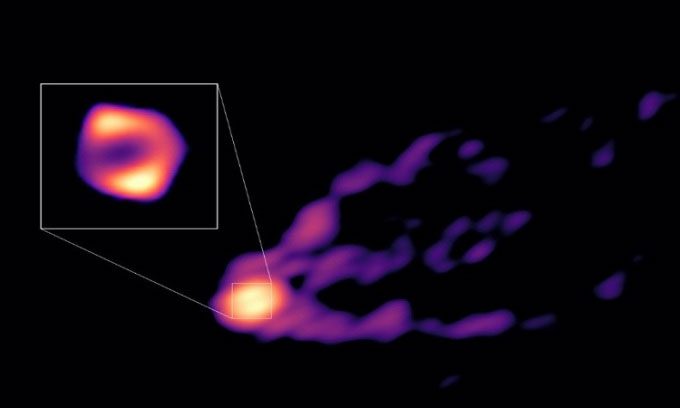Scientists have captured energy rays emitted from the edge of a black hole for the first time, providing additional insights into black hole research in the Messier 87 galaxy.

Image of energy rays emitted from a black hole captured by scientists. (Photo: S Lu/Guardian).
“We know that energy rays are emitted from the area around the black hole, but we still do not fully understand how this occurs,” said Dr. Ru Sen Lu from the Shanghai Astronomical Observatory, as reported by the Guardian.
Most galaxies contain a supermassive black hole that can engulf anything that passes by. Many black holes emit extremely powerful energy rays, traveling at speeds close to the speed of light.
The latest observations have been conducted since 2018, providing more images of the black hole at the center of Messier 87 (M87), a gigantic galaxy that is part of the Virgo supercluster.
The M87 black hole has a diameter of 40 billion kilometers, with a mass 6.5 billion times that of the Sun, and is located 54 million light-years from Earth.
Scientists believe that the energy of the aforementioned rays comes from the rotation of the black hole. However, it is unclear exactly where these rays are emitted from. Some hypotheses suggest that they originate from the event horizon or from the Ergoregion, where spacetime moves along with the black hole.
“Now we can begin to address questions such as how the particles of energy rays are accelerated and heated, and many other mysteries surrounding black holes, in a deeper manner,” said Dr. Kazunori Akiyama from the Haystack Observatory at the Massachusetts Institute of Technology (MIT).


















































